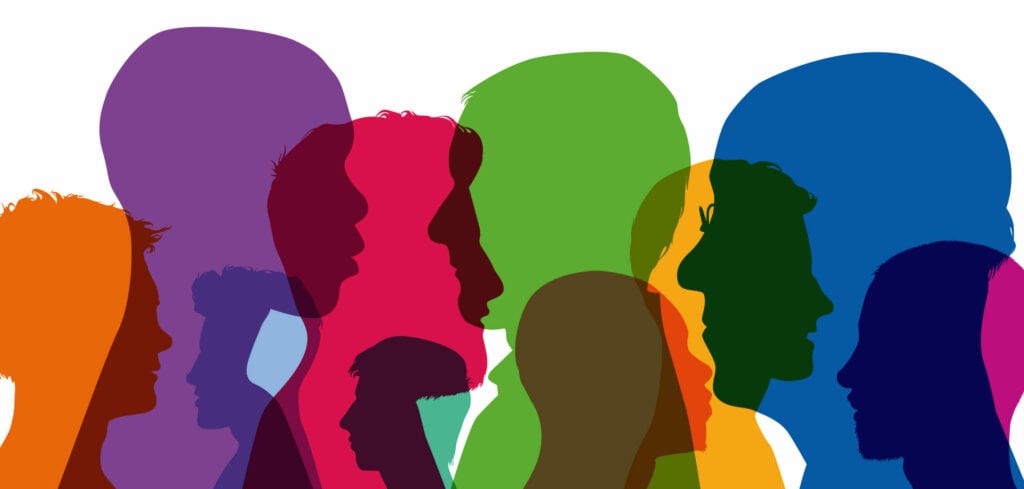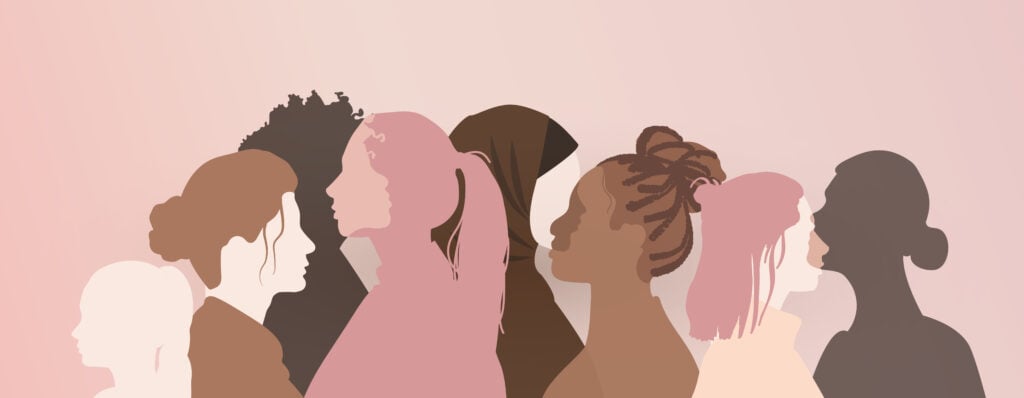Gender identity and mental health
Reviewed by Susan Radzilowski, MSW, LMSW, ACSW

Gender identity is a deeply felt, internal sense of who you are on a spectrum of masculinity, femininity, and androgyny. The way you choose to express your gender depends on a complex mix of factors that influence your thoughts, emotions, and behavior. Feeling safe and accepted—or the opposite—plays a huge role in how someone expresses their identity, so a person’s gender expression may shift depending on their environment.


Gender identity is very personal and rooted in someone’s sense of self, and it doesn’t always align with the sex a person was assigned at birth. Your gender can change, fluctuate, or stay the same over your lifetime.
The difference between gender, sex, and sexuality
Gender and biological sex are separate and distinct. Gender is a social construct that varies across different countries and cultures, while sex (being male or female) is a physiological characteristic. A person’s gender identity isn’t determined by their anatomy.
A person may be assigned female at birth (AFAB) but identify as a man, or they may be assigned male at birth (AMAB) but identify as a woman. Some people identify as neither men nor women, or as a combination of genders.
Gender is also different from sexual orientation, which refers to a person’s romantic, emotional, and/or sexual attraction to others. You can be attracted to people of any gender, no matter what your own gender may be.
How gender, sex, and sexuality affect your identity
Your sex, gender, and sexuality are part of your identity, but they’re only three slices of a multidimensional whole. They can inform one another, but they don’t have to.
For example, a person may have been assigned female at birth, come out as a transgender man, and have a girlfriend—but still identify as gay, even though they may be perceived as being in a male-female relationship. Similarly, someone who was born intersex but raised as a woman, identifies as a woman, and has a boyfriend may consider themselves to be both cisgender and straight.
Gender terms
Each person’s identity is unique, so it’s impossible to say how many genders there are. One or more of these identity terms may resonate with you, or you may identify in a different way.
Agender: Describes a person with no gender identity or a neutral gender identity.
Bigender: Describes a person who fluctuates between two genders, often depending on the context or situation.
Cisgender: Describes a person whose gender identity matches the sex they were assigned at birth.
Demigender: Describes a person who identifies partially with a certain gender.
Genderfluid: Describes a person whose gender identity changes over time or depends on the situation.
Nonbinary/genderqueer/gender nonconforming: Describes a person who doesn’t identify exclusively as a man or a woman. Nonbinary people may identify as agender, bigender, genderfluid, or another way.
Polygender and pangender: Describes a person who experiences elements of all genders.
Queer: Describes a person whose gender and/or sexuality doesn’t align with traditional cisgender heterosexuality. Although this term was previously used as a slur, many people (especially young people) now consider it positive and inclusive. That said, “queer” is not embraced universally in the LGBTQIA+ community, so do not use it to describe someone unless they’ve communicated that they identify as queer.
Transgender: Describes a person whose gender identity does not match the sex they were assigned at birth.
Trans man: A person who was assigned female at birth but identifies as a man; a female-to-male (FTM) transgender person.
Trans woman: A person who was assigned male at birth but identifies as a woman; a male-to-female (MTF) transgender person.
Two-Spirit (2S): Used by some Indigenous people to describe themselves as having both masculine and feminine energy.
Gender and pronouns
Historically, people have most often used pronouns that match the sex they were assigned at birth. However, today more of us are choosing to use pronouns that reflect our true gender identity.
Pronouns are used to refer to someone when we don’t know their name. Examples include he/him/his, she/her/hers, they/them/theirs, or another combination of chosen words. For instance, a person who was assigned male at birth but identifies as a woman may use she/her/hers pronouns.
It’s important to respect everyone’s pronouns. If you don’t know a person’s pronouns, consider introducing yourself with your own: “I’m Kevin, and my pronouns are he/him. May I ask what pronouns you use?” This offers a chance for the other person to share theirs as well, though you should be careful to avoid putting any pressure on them to do so.
If there’s not a comfortable moment to ask for someone’s pronouns, use neutral language (such as “they”) or the person’s name instead. Above all, never make an assumption about anyone’s gender identity or pronouns.
Gender oppression
Gender oppression is the systemic discrimination of people who don’t identify with the gender they were assigned at birth, as well as those who do. It can manifest in many ways, including:
Transphobia: Fear or hatred of transgender people. Examples include making fun of someone’s appearance or pronouns, telling them they’re “confused” about their own gender, or refusing to acknowledge their gender identity. Sometimes these negative messages are so pervasive at school, at work, or at home that transgender people may absorb them into their own sense of self. This is called “internalized transphobia.”
Cissexism: The belief that cisgender people are superior to transgender people, or that transgender people are somehow “unnatural.” This can take the form of job discrimination, housing discrimination, denial of medical care, and more. It can also be more subtle, such as being told you can’t use the restroom that corresponds with your gender identity, or being harassed for using a different pronoun than the one you were assigned at birth.
Misgendering: Referring to a person using pronouns or a form of their name that doesn’t match their gender identity. For example, calling a trans woman “he” or “him.”
Gender-based violence: Any act of violence, physical or psychological, that is perpetrated against someone based on their real or perceived gender identity. This includes but is not limited to sexual assault, partner abuse, and murder.
Deadnaming: Calling a trans person by the name they were given at birth instead of their chosen name. This may be done unintentionally out of habit, but it can also be done intentionally to invalidate someone’s identity.
How gender can impact your mental health
The way your gender affects your mental health depends on how society reacts to your gender. For example, transgender and nonbinary people who live in places where they’re not accepted or respected are more likely to experience anxiety, depression, substance abuse, and other mental health concerns.1
Signs that you or someone you know might be struggling to express your gender identity include:
- Feeling scared or anxious about sharing your gender with others
- Worrying about how to express your gender through your appearance (such as clothing), or feeling pressure to express your gender in a specific way
- Feeling self-conscious about how you look, walk, talk, or behave
- Believing that you have to act a certain way or try to be someone you’re not
- Feeling misunderstood, even by close friends and family
- Feeling pressure to label and share your gender when you’re still questioning or exploring
- Thinking you have to conform to a specific gender or the sex you were assigned at birth
- Being treated differently from others because of your gender
- Being picked on or bullied because of your gender
- Feeling anxious about choosing or sharing your pronouns or new name
- Losing interest in activities you once enjoyed
- Withdrawing or isolating yourself from others
- Self-harming or abusing drugs or alcohol to cope with your feelings
- Feeling hopeless or having suicidal thoughts
If you’re in crisis and need immediate help, you can call, text, or chat with one of the following hotlines for assistance:
- Trans Lifeline Peer Support Hotline: 877-565-8860
- TrevorLifeline: 1-866-488-7386
- TrevorText: Text START to 678-678
- 988 Suicide & Crisis Lifeline: 988 or 1-800-273-TALK (8255)
- Crisis Text Line: Text HOME to 741741
How to get support
If you’re currently exploring, questioning, or struggling with your gender, there are options that may help you feel more comfortable and supported:
Gender-affirming therapy is designed to help you explore your gender identity and expression in a safe, supportive environment.
Gender-affirming medical care includes hormone therapy, surgery, and other medical procedures to help you affirm your gender identity.
Support groups, including online and in-person groups for transgender and nonbinary people, can provide a sense of community and the opportunity to share your experiences with others who understand them.
Transgender- or nonbinary-specific events, such as a pride parade, trans-focused conference, or International Transgender Day of Visibility, can help you feel connected to others in the community.2
Becoming an activist or ally in the transgender and nonbinary communities can help make a difference for others while providing a sense of purpose and connection for yourself.
How to support others
If you know someone who’s exploring, questioning, or struggling with their gender, here are actions you can take to support them:
Educate yourself about transgender and nonbinary identities and the issues faced by transgender and nonbinary people.
Avoid making assumptions about the person’s gender identity, pronouns, or chosen name.
Respect and use the person’s shared pronouns and chosen name.
Create a safe, affirming space for the person to express their gender identity without judgement or pressure.
Become an ally in the transgender and nonbinary communities by speaking up against discrimination and working to create inclusive environments.
If you’re not sure how to support someone, ask them what they need. Just letting them know you’re there for them can make a big difference.
Gender identity is complex and personal, and there’s no one right way to explore it. If you identify as transgender, nonbinary, gender nonconforming, or genderqueer, or are questioning or struggling with your gender identity, you’re not alone. Browse our directory to find a gender-affirming therapist who can help support you.

Sources
About the author
The editorial team at therapist.com works with the world’s leading clinical experts to bring you accessible, insightful information about mental health topics and trends.
Related articles

What is LGBTQIA+ imposter syndrome?
Even if you’re confident in your identity, this type of imposter syndrome may...

Transgender people and mental health
Being trans is a gender identity, not a mental health issue. But trans people...


